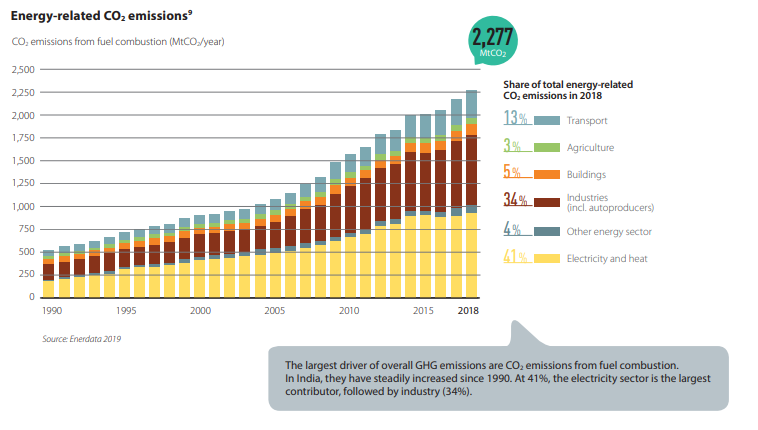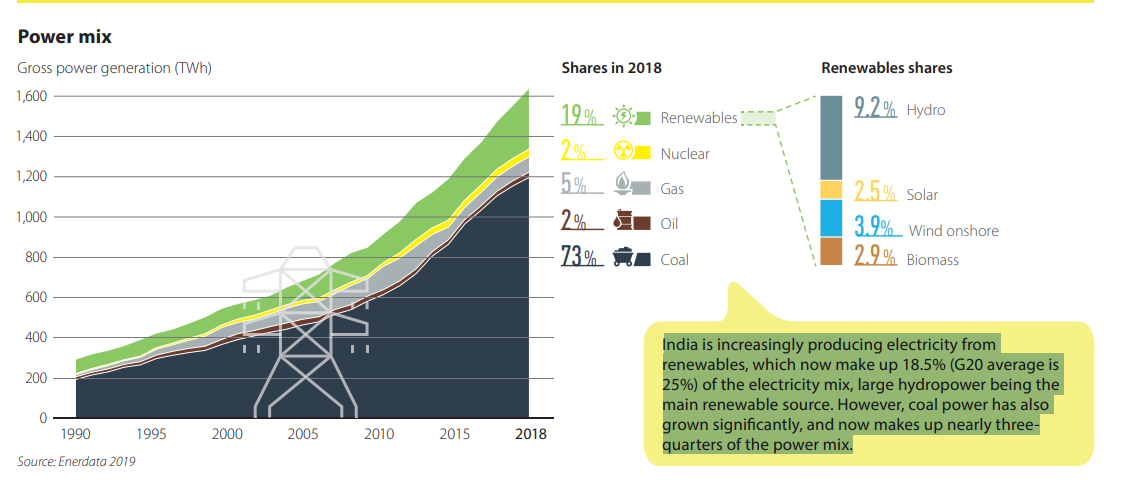
To keep the Paris Agreement’s 1.5 Degree Celsius goal within reach, G-20 countries will have to fasten their 2030 emission targets by 2020 and significantly scale up mitigation, adaptation and finance over the next decade.
New Delhi: More than a million people die in India every year as a result of outdoor air pollution, due to stroke, heart disease, lung cancer and chronic respiratory diseases and, compared to the total population, this is the highest level in the Group of Twenty (G20) countries, Climate Transparency Partnership said in a report quoting World Health Organisation (WHO) data.
To keep the Paris Agreement’s 1.5 Degree Celsius goal within reach, G-20 countries will have to fasten their 2030 emission targets by 2020 and significantly scale up mitigation, adaptation and finance over the next decade, according to the latest ‘Brown to Green Report 2019’ by the Climate Transparency partnership, an international research collaboration.
The report analyses G20 countries’ performance for climate mitigation, finance and adaptation and has found that the share of fossil fuels in the G20 energy mix remains at a high 82 per cent. The G20 countries are responsible for approximately 80 per cent of global greenhouse gas (GHG) emissions.
Energy-related CO2 emissions in G20 countries shot up 1.8 per cent in 2018 due to rising energy demand. Energy supply is not getting cleaner, despite a more than 5 per cent increase in G20 total renewable energy supply in 2018.
“India needs to reduce its emissions to below 4.5 Gigatonne of equivalent carbon dioxide (GtCO2e) by 2030 and to below 3.2 GtCO2e by 2050 to be within its fair-share range compatible with global 1.5°C IPCC scenarios,” said the report.
India’s 2030 nationally determined contributions (NDC) would only limit its emissions to 6 – 6.3 GtCO2e as it produces 73 per cent of its electricity from coal – one of the highest rates in the G20, the report said.
In 2018, G20 emissions in the power sector increased by 1.6 per cent. While renewables now account for 25.5 per cent of power generation, this is not sufficient to outweigh the growth of emissions from fossil fuel sources.
G-20 transport emissions increased by 1.2 per cent in 2018. Low-carbon fuels accounted for less than 6 per cent of the fuel mix. Whereas, they need to increase roughly ten times by 2050 to keep global warming below 1.5°C.
According to the study report, G20 countries need to scale up their policies to ban new fossil fuel cars by 2035 at the latest, reduce emissions from freight transport to net-zero by 2050 and shift towards non-motorised and sustainable public transport.
The emissions by G20 nations in the building sector grew more than in any other sector in 2018 (4.1%). Retrofitting existing buildings remains a huge challenge. New buildings have to be near zero-energy by 2020-25 to keep global warming below 1.5°C. Also, livestock breeding accounts for 40 per cent of agricultural emissions in G20 countries, and indirectly causes emissions through the displacement of forest for grazing and pasture.
According to the report, the concept of a ‘just transition’ policy to cushion the transition for exposed workers in high-carbon sectors like coal is not prevalent in India’s climate policy discourse.
India is undergoing massive transitions in the areas of urbanisation, industrialisation, formalisation, and labour force growth. India needs to create about 32 million jobs per year. The success of these macro-scale transitions is the policymakers’ main concern.
Coal forms a significant part of the economies of some poorer states in India (Jharkhand, Orissa, Chhattisgarh). According to official employment figures, 355,000 workers were employed in coal mines, out of a workforce of about 450 million.
Coal mine employment has fallen by about 1.8 per cent per year, while productivity has grown by about 6% per year. Estimates of coal value chain employment arrive at a bit more than 1 million jobs. A just transition will require the macro-transitions underway to be successful.
India’s GHG emissions have increased by 150 per cent (1990-2016) and the government’s climate targets to reduce its emission intensity by 33-35 per cent by 2030 are not yet in line with a 1.5°C pathway.
India aims at 40 per cent non-fossil-based power capacity by 2030 and is increasingly producing electricity from renewables, which now make up 18.5 per cent (G20 average is 25 per cent) of the electricity mix. However, coal power has also grown significantly, and now makes up nearly three quarters of the power mix.
On an average, In India losses amounting to US$ 2.8 billion occur yearly due to extreme weather events. With a 3°C warming, India would experience around 130 days per year when temperatures reach more than 35°C.
The share of fossil fuels globally needs to fall to 67 per cent of global total primary energy by 2030 and to 33 per cent by 2050 and to substantially lower levels without carbon capture and storage. Currently, a total of 18 out of G20 countries have implemented or are in the process of implementing explicit carbon-pricing schemes such as emission trading systems (ETS) and carbon taxes in the direction to reduce their carbon emissions.
According to the report, limiting global temperature increase to 1.5°C instead of 3°C can avoid over 70 per cent of climate-related impacts in the water, health and agriculture sectors.














